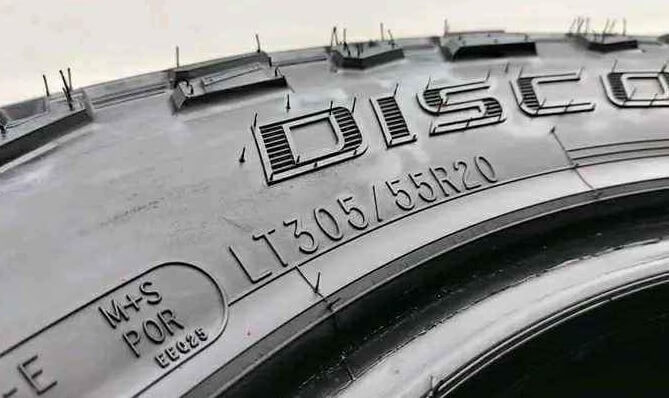Tire Size 295/55r20 vs 305/55r20

Tire upgrades can enhance your vehicle’s performance and appearance. The switch from 295/55r20 to 305/55r20 is a popular choice for many drivers seeking a subtle yet noticeable change. Let’s explore the implications of this upgrade.
- Slightly wider tread offers improved grip and stability
- Slightly larger diameter increases ground clearance
- Minor impact on speedometer accuracy
- Potential for enhanced off-road performance
- Minimal effect on fuel efficiency and ride comfort
295/55r20 vs 305/55r20 Table
The primary distinction between 295/55r20 and 305/55r20 tires lies in their width. The 305/55r20 is 10mm (0.39 inches) wider, resulting in a slightly larger contact patch with the road.

Fitment Guide
Replacement tires should be within 3% of the diameter of the original tires to prevent clearance issues.
At only 1.3% larger in overall diameter, the 305/55r20 can directly replace the 295/55r20 without needing adaptations like a lift kit.
On-Road Impact
The switch to 305/55r20 tires can have various effects on your vehicle’s on-road performance. Let’s examine these impacts in detail:
- Handling: The wider 305/55r20 tires provide a larger contact patch with the road, potentially improving grip and cornering stability. However, this can also lead to increased rolling resistance, which may slightly reduce steering responsiveness.
- Fuel Efficiency: The wider tires may cause a minor decrease in fuel efficiency due to increased rolling resistance and weight. However, the 1.3% difference in overall diameter is unlikely to have a significant impact on your gas mileage.
- Ride Comfort: The slightly taller sidewall of the 305/55r20 (6.6 inches vs 6.39 inches) may provide a marginally smoother ride by absorbing road imperfections more effectively. However, this difference is minimal and may not be noticeable to most drivers.
- Speedometer Accuracy: The 1.3% increase in overall diameter will cause your speedometer to read slightly lower than your actual speed. For example, when your speedometer shows 20 mph, you’ll actually be traveling at 20.26 mph. While this difference is small, it’s worth being aware of, especially when driving near speed limits.
- Aesthetics: The wider 305/55r20 tires will give your vehicle a slightly more aggressive stance. This can enhance the overall look, particularly on larger vehicles or those with an off-road focus.

Off-Road Impact
For those who enjoy off-road adventures, the switch to 305/55r20 tires can offer some benefits:
- Ground Clearance: The 0.43-inch increase in diameter translates to a slight boost in ground clearance. While this difference is minimal, it can be beneficial when navigating rough terrain or obstacles.
- Traction: The wider tread of the 305/55r20 tires can provide better traction in loose or muddy conditions. This can be particularly advantageous during off-road excursions.
- Durability: The larger size and potentially more robust construction of the 305/55r20 tires may offer improved durability when facing off-road challenges. However, this depends on the specific tire model and its design.
- Flotation: In soft surfaces like sand or snow, the wider 305/55r20 tires can provide better flotation, helping to prevent your vehicle from sinking or getting stuck.
What is the Difference Between 295/55r20 and 305/55r20?
The main difference between 295/55r20 and 305/55r20 tires is their width. The 305/55r20 tire is 10mm (0.39 inches) wider than the 295/55r20.
This increased width results in a larger contact patch with the road, which can affect handling, traction, and overall vehicle appearance.

Can I Use 305/55r20 Instead of 295/55r20?
Yes, you can use 305/55r20 tires instead of 295/55r20. The overall diameter difference between these two tire sizes is 1.3%, which is well within the recommended 3% tolerance.
This means the switch should be safe for most vehicles without requiring major modifications. However, it’s always advisable to consult your vehicle’s specifications or a professional to ensure compatibility, as the wider tires may affect wheel well clearance and steering.
How Much Taller Is a 305/55r20 Tire Than a 295/55r20?
A 305/55r20 tire is 0.43 inches (11mm) taller than a 295/55r20 tire. The 295/55r20 has a diameter of 32.78 inches (832.5mm), while the 305/55r20 has a diameter of 33.21 inches (843.5mm). This represents a 1.3% increase in overall diameter.
How Much Wider is a 305/55r20 Tire Than a 295/55r20?
A 305/55r20 tire is 0.39 inches (10mm) wider than a 295/55r20 tire. The 295/55r20 has a width of 11.61 inches (295mm), while the 305/55r20 has a width of 12.01 inches (305mm). This represents a 3.4% increase in width.
Our Observation
Switching from 295/55r20 to 305/55r20 tires offers a subtle yet noticeable upgrade for many vehicles. The 1.3% increase in diameter and 3.4% increase in width fall within acceptable limits, making this change generally safe and straightforward
On-road, drivers may experience slightly improved grip and cornering stability, with minimal impact on fuel efficiency and ride comfort. The wider profile can enhance the vehicle’s appearance, giving it a more aggressive stance.
Off-road enthusiasts will appreciate the marginal increase in ground clearance and potentially better traction in challenging conditions.
However, it’s important to note that while these differences exist, they may be negligible in everyday driving situations. Always consult with a professional to ensure compatibility with your specific vehicle before making the switch.

Meet Caitlin McCormack, a Tire Size Expert and Blogger Passionate About Everything Related to Tires. With Years of Experience in the Tire Industry, Caitlin Has Become an Expert in Tire Sizes and Their Impact on Vehicle Performance.
